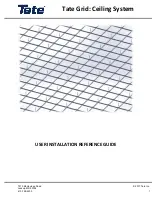
25
5.2 Unfurling the sail
5.3 Furling the sail
1.
Release the furling line and the windward genoa sheet. Allow these to run freely while the sail is being
unfurled.
2. For a controlled unfurling manoeuvre, it is best to place a turn of the furling line around a winch or a half-
turn around a cleat. This introduces some drag, which is particularly useful in stronger winds.
3.
Place a turn of the leeward genoa sheet around a winch and unfurl the sail by pulling in the sheet. Once the
wind catches the sail it will unfurl more easily. The best point of sail for unfurling is between close reach
and beam reach, as the wind will then fill the sail quickly.
4. Place a few more turns of the sheet around the winch and sheet the sail in to the desired trim.
1.
Release the windward sheet and ensure that it can run freely.
2.
Furl the sail by pulling the furling line. Release the leeward sheet but keep a little tension on it, for example
by placing a turn around a winch. It is important to furl the sail tightly and evenly, as a sail which is furled
too loosely can blow out a little in strong winds. If the boat is left unattended, the sail may flap until it tears.
A very loosely furled sail may also cause unnecessary wear, as the sail roll will swing back and forth in the
wind.
3. Belay the furling line carefully. If the boat is left unattended, the furling line should be belayed on a cleat
for safety.
If the boat is left for a fairly long period, it is a good idea to take down the sail and stow it below deck. It is
then protected from UV radiation and dirt. Alternatively, a sail cover (”furling tube”) can be used to protect the
sail.
If the furling line is accidentally released, the sail may unfurl and flap unchecked in strong
winds. If left for any length of time, it could be damaged irreparably!
















































